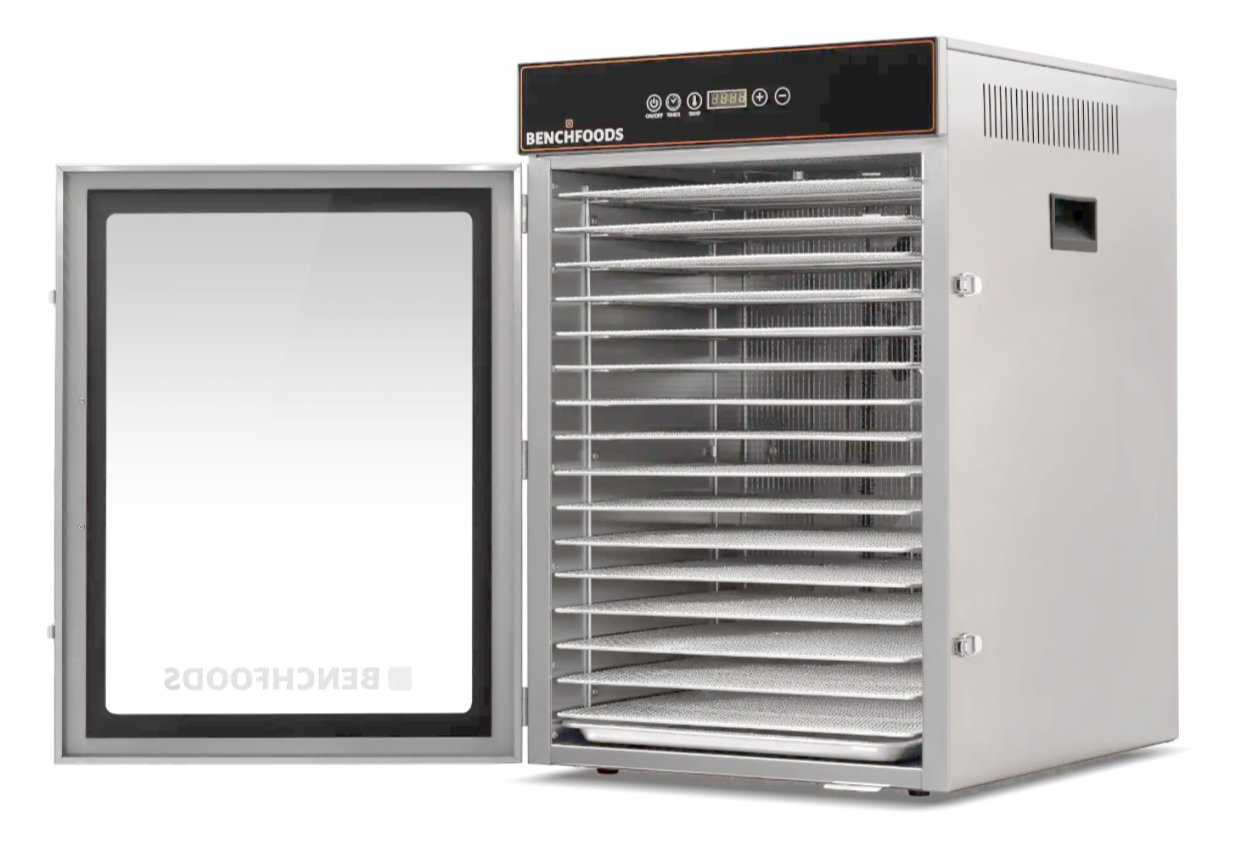All About Dehydrators
A dehydrator is a low-energy appliance for removing moisture from food in order to preserve it for long-term storage. It combines a fan with an element to circulate warm air, slowly drying out the food inside. Removing the moisture from food inhibits bacterial growth, making it shelf stable while retaining nutrients.
Dehydrators come in a variety of body styles with some options for timer and fan placement. Body styles may be plastic or metal, with the same options for shelves. Some machines have simple mechanical timers and others have computers with digital displays. Fans can come on the back, top, or bottom. All of these options have pros and cons we’ll visit below.
The 2 most important options to consider when dehydrator shopping are fan placement and tray material.
Fans can be placed at the back, top, or bottom of the dehydrator.
Bottom-mounted fans are prone to breakage due to fluids or fat getting into the fan components at the bottom. Bottom-mounted fans are inferior and should be avoided when possible.
Top-mounted fans can be prone to having hot zones within the dehydrator, leading to over or undercooking items. These dehydrators need to have their trays rotated regularly during the dehydrating process to ensure even cooking. Top-mounted fans are a second choice item.
Rear mounted fans offer the most stable dehydrating experience, with even heat and no need to rotate trays. Many dehydrators with rear mounted fans are larger in size, which may be a downside for some. Rear mounted fans are the preferred option.
Trays can be made of metal or plastic.
Plastic trays can become brittle with a lot of usage, and eventually falls into pieces. Trays may break during washing or storage.
Metal trays rarely break or become warped. Recyclable at the end of their life.
Digital Displays
Digital displays are nice but not a necessity and do not add to the experience. All digital products will eventually fail in the hot environment and can rarely be replaced.
Mechanical timers are generally very hardy and rarely fail! The downside to a mechanical timer is remembering to reset at the appropriate hour.
Regardless of whether you choose a brand new model with all the bells and whistles or the dusty round one from the back of your grandma’s closet, your pet will be so excited you’ve taken this step to making them a fresh batch of snacks!




